
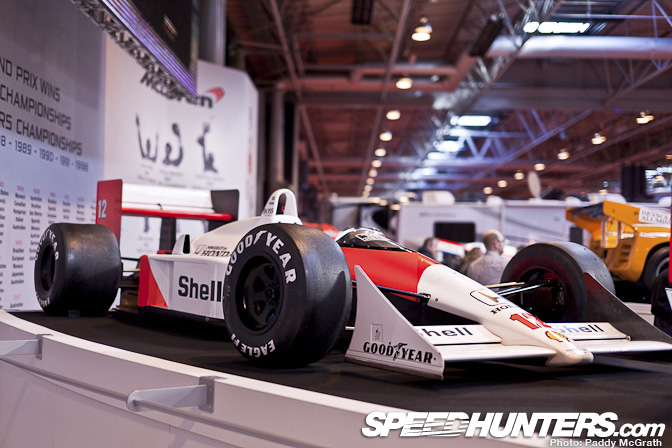
In part one of this story, Andy and myself (mostly Andy) talked you through some of the great McLaren racing cars from Bruce McLaren's M7C-1 from 1969 to Niki Lauda's MP4/2-1 of 1984. Most of you will be familiar with the iconic McLaren Formula One cars of the 1980s so we'll start back with probably one of the most iconic of them all, Aytron Senna's MP4/4-4 from 1988 …
AB: This is the all conquering Honda Powered McLaren MP4/4 – an incredible fifteen out of sixteen wins in the 1988 F1 season. Notice that there is now no Marlboro branding. McLaren took the decision to remove all cigarette branding from their cars when the West sponsorship ended and Vodafone took over. Shame.
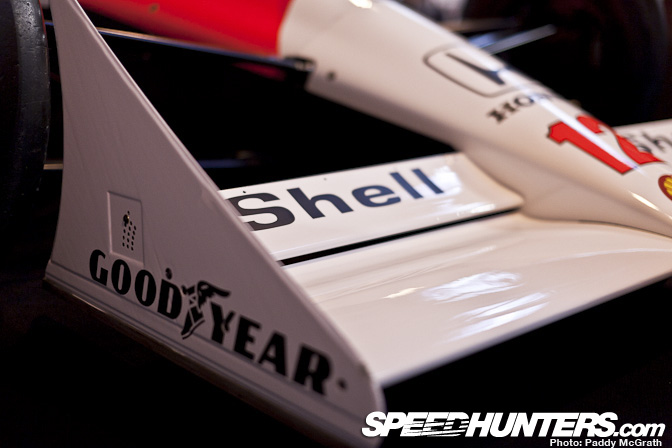
AB: Designed by Gordon Murray and Steve Nichols. It has many features of Murray's last Brabham-BMW design, the BT55, which was very low and radical but not very successful.
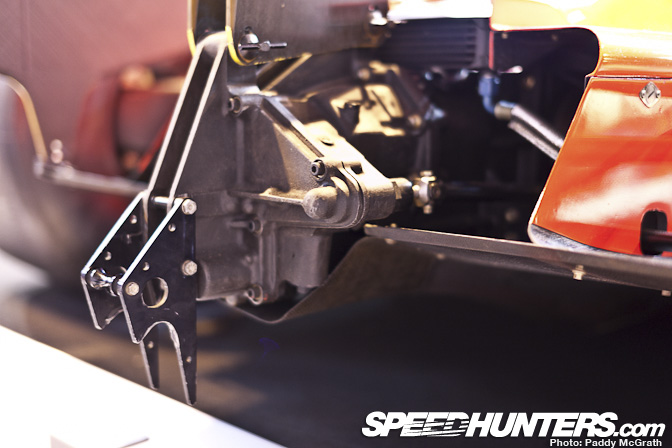
PMcG: Just a shot of the jacking point at the rear of the car.
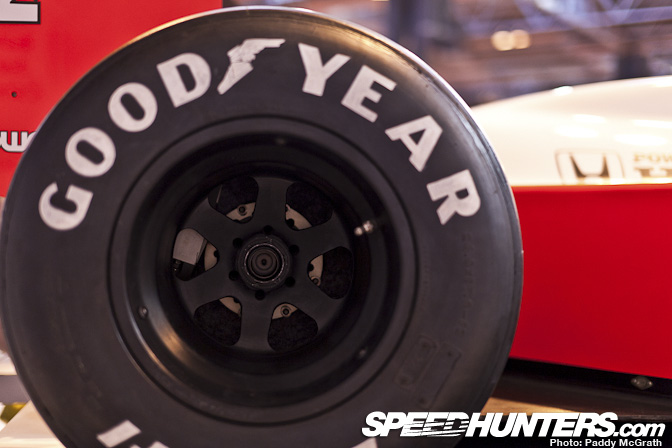
AB: This was the year Ayrton Senna joined Alain Prost at McLaren. I was told by one of the engineers that the Frenchman originally suggested Senna would be a good choice for McLaren! He probably regretted that as Senna would win the championship.
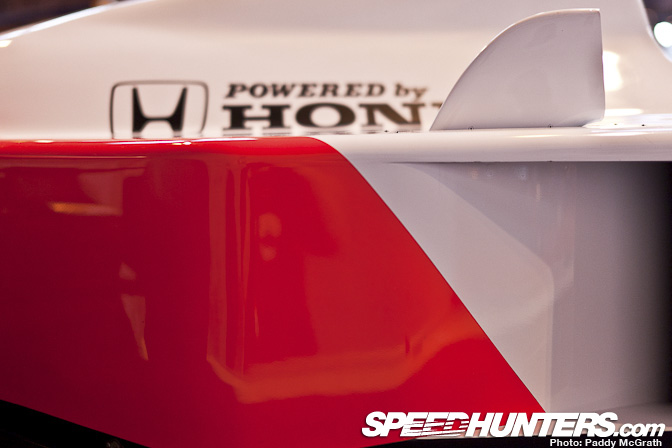
AB: The Rocket Red paint colour was introduced by McLaren in the early 80s and was used on many Marlboro sponsored cars including those Penske Racing. In the flesh, this has more of an Orange appearance. Time consuming to apply as its consists of many layers of paint. When Adrian Newey joined McLaren, he was appalled in the paint step caused by those layers where the red met the white as it affected aerodynamics. The exact position of the red/white split was calculated. A specific amonunt of red needed to be visible on the engine cover and front nose.
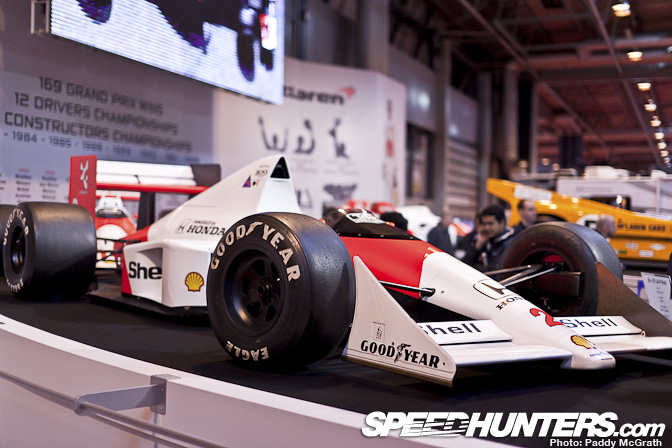
AB: McLaren MP4/5-6 from 1989. Although it looked similar to the MP4/4, it was an all new chassis, using the new Honda V10 3.5 Litre unit.
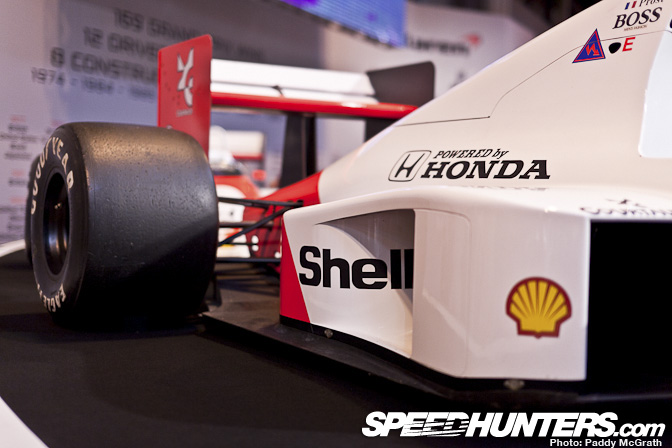
AB: Prost and Senna won 10 races in 1989, but they were now arch rivals and would not talk to each other. Prost would win the Championship and leave for Ferrari.
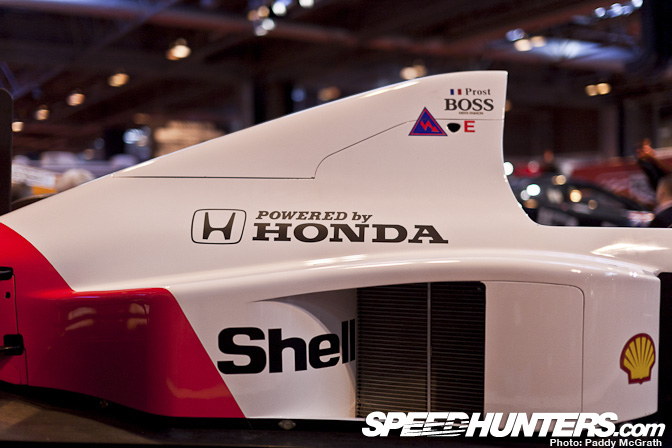
AB: The new engine formula banning turbos, resulted in the need for increased cooling. Different cover panels were used in the radiator outlets for each race to control cooling and improve aerodynamics.
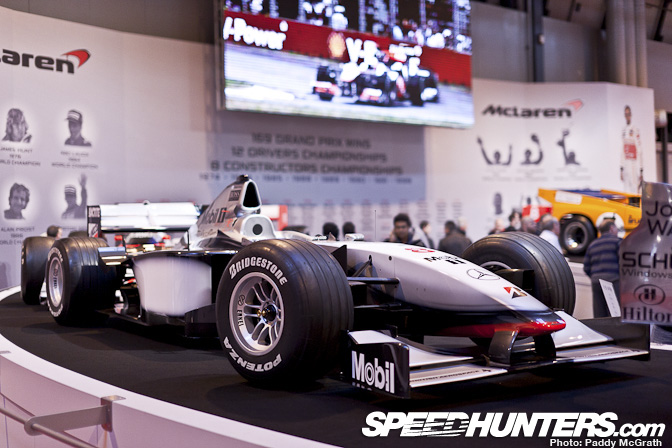
AB: This is the 1998 McLaren MP4-13-3. This is the car which Mika Hakkinen won his first Formula One World Championship. This was the first car designed under Adrian Newey. Most people assume this is a Mercedes livery. It was designed by McLaren's awesome Graphics Team (I can say that, I wasn't involved at that point). The idea was to use McLaren's house colours (grey, silver, red and white) and create a design which could be used on different cars and in time with different sponsors. Fast forward to today and the basic concept remains. But will the 2011 car look like that ?
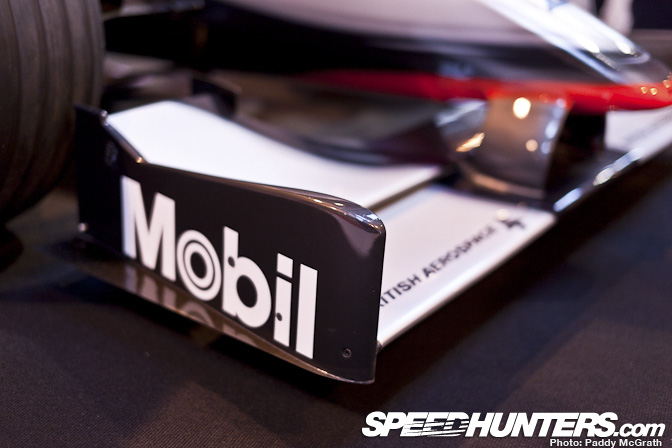
AB: Front Wing endplates changed constantly. IIRC there were over 20 designs in 1997. Just for reference, many F1 cars at shows are showcars, built by specialist companies. I'm not sure if this is the case in this instance (As far as I know this was the real deal – Paddy), but you can normally tell by the high quality of the carbon. Real race cars dont always have that! The Dark Metallic Grey originally appeared on the McLaren race transporters in the Marlboro days.
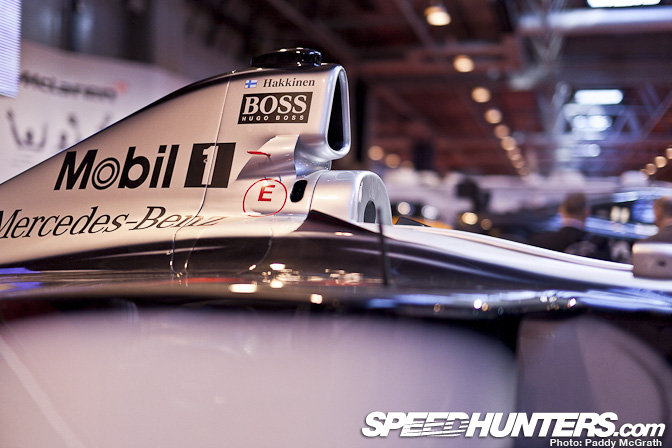
AB: The small triangular extensions by the cockpit, meet bodywork regulations and allow the bodywork either side to be a little lower. The airbrush work was very time consuming to apply, the paintshop needed to make sure the gradient would line up over different parts. A work of art. I never tired of seeing the artists at work. Like Marlboro, the West branding has been removed. In its day, McLaren ran with driver names or the West 'Mirror Man' logo in races where tobacco advertising was banned.
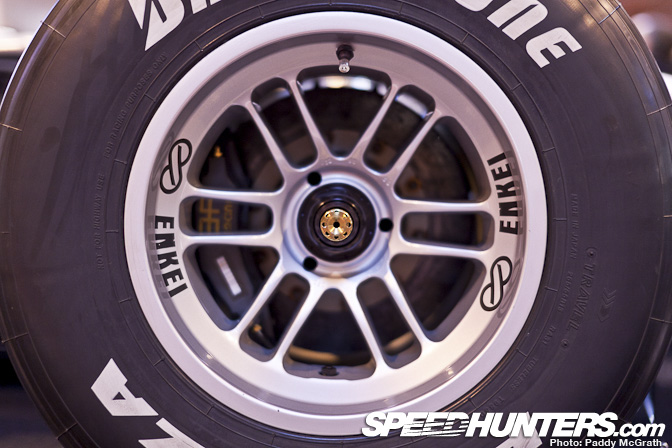
AB: Enkei have been a partner to McLaren for decades. McLaren are well known for their long sponsor associations. Their marketing department are the best in the business. Today Mobil, Enkei and TAG Heuer are some of their longest surviving relationships.
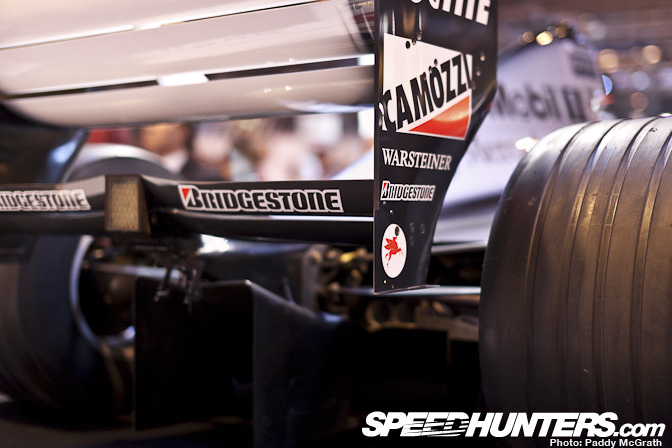
AB: This current airbrushed livery has worn Goodyear, Bridgestone and now Pirelli tyre logos. McLaren are one of the few teams who have somehow managed to relegate tyre branding to areas rarely seen by TV cameras.
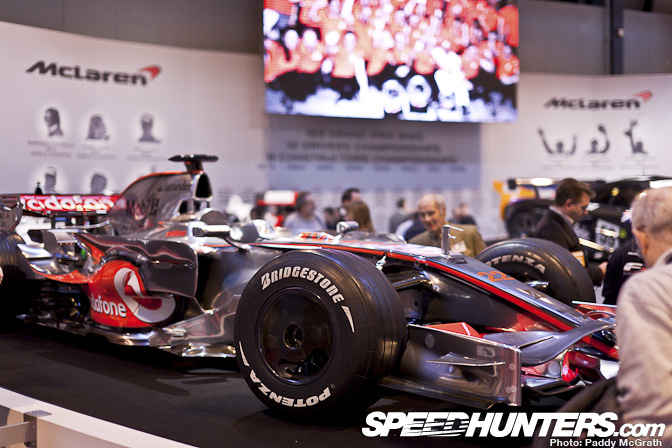
AB: McLaren introduced the current chrome airbrushed livery in 2006 when West left McLaren after new tobacco advertising legislation. Johnny Walker and Emirates sponsored the car for a year before Vodafone came onboard.
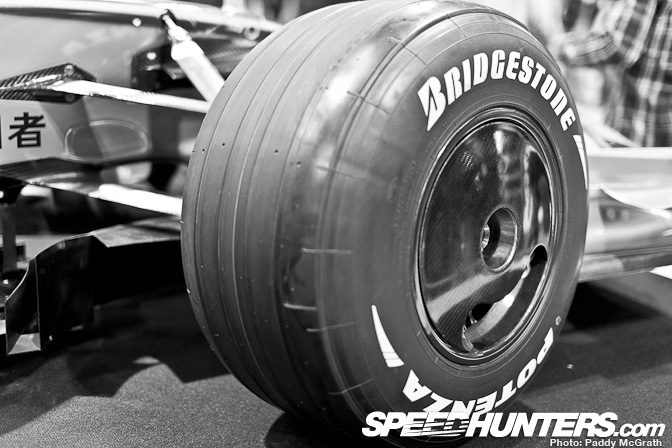
AB: These carbon wheel covers, pioneered by Ferrari aided aerodynamics around the front tyre, which would affect air flow all the way to the rear wing. These were banned in 2010.
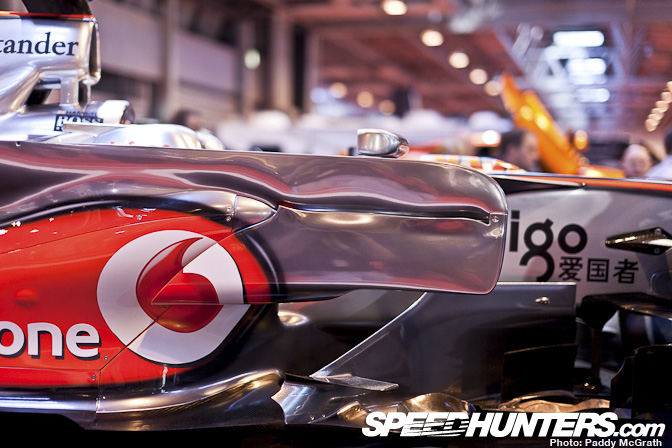
PMcG: If you look back to part one, at Emerson Fittipladi's M23-5 in particular, you have a great comparison of the evolution of the driver's seating position.

AB: Even the diagonal strip, across the Mercedes Benz logo has an aerodynamic purpose. It may also get around minimum bodywork width for the engine cover. In 2007, Lewis Hamilton and Fernando Alonso were the new driver pairing. Most people outside of McLaren expected 'Fred' to walk all over Lewis. Anyone who had worked with Lewis knew it wouldn't be quite so easy.
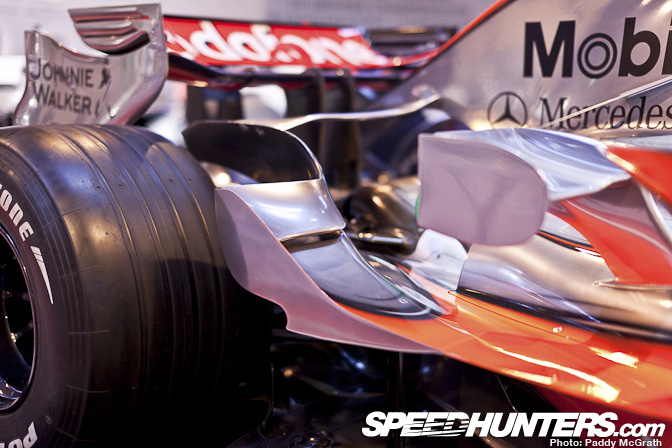
AB: One of the benefits of the chrome livery are important aerodynamic areas are often in shadow and harder for rival teams to see than a traditional red or blue.

AB: Many of the aerodynamic add-ons were used to try and move air over and
away from the rear tyres, towards the rear wing. The tyres on a Formula
One car cause a huge amount of turbulence, which needs to be pushed away
from the wings. Compare this rear wing endplate shape with that of the MP4/4 at the start of this article.
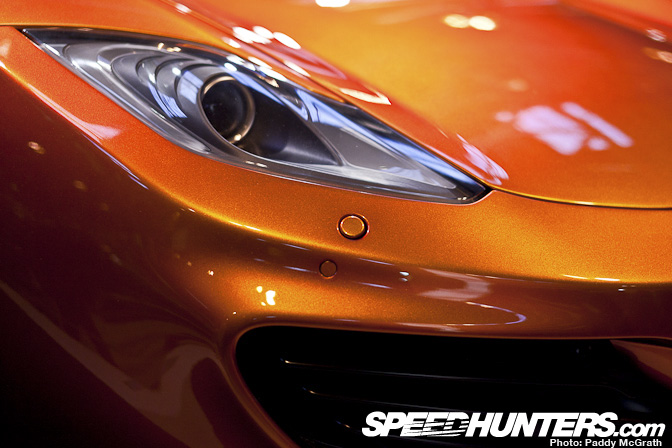
PMcG: The future of McLaren road cars, the MP4-12C. One of my personal favourite traits of McLaren Cars is that they build road cars to be the best they can be, rather than to fund their F1 racing program. I wonder will this car create a legacy similar to the F1 ?
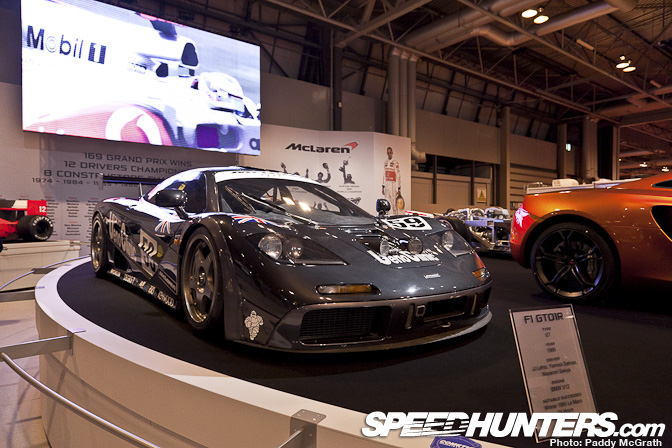
AB: This is the 1995 Le Mans winning McLaren F1 GTR, sponsored by a Japanese Dentist! The Ueno Clinic F1 GTR. This didn't take long for me to design! The colours are from the owner of Ueno Clinic's personal Mercedes SL.

AB: This was the original test car and was not expected to perform that well at Le Mans. When the regular teams such as Gulf GTC, Harrods and West DPR McLarens had issues, the Paul Lanzante car would take the lead with JJ Letho, Yanick Dalmas and Masanori Sekiya and would lead the other McLarens home with the other cars finishing 3rd, 4th, 5th and 13th. Unheard of for a roadcar on its debut. Sekiya was also the first Japanese driver to win Le Mans.
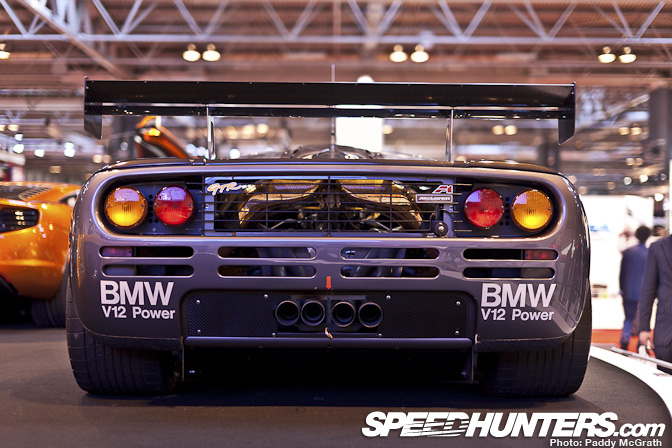
AB: I cut those stickers (Laughs) The GTR had a number of differences to the roadcar in addition to the rear wing, including repositioned exhausts and revised engine cooling. The success would lead to the F1 LM, a limited edition road going version of the F1 GTR. A number of owners also upgraded their 'normal' F1's with a high downforce kit from the GTR.
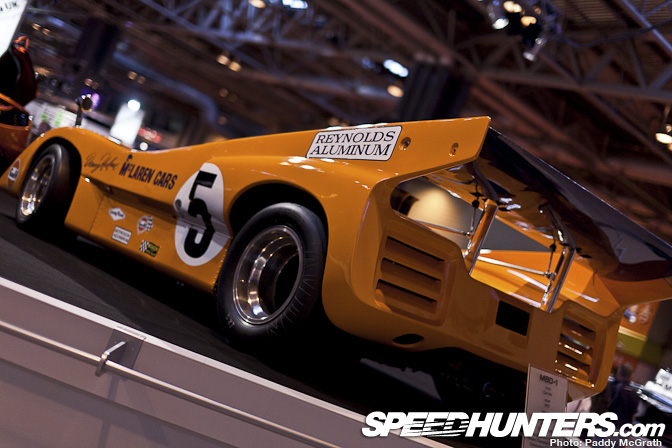
AB: The 1970 M8D, a Can-Am car powered by a Chevrolet V8 engine. Bruce McLaren was killed in testing at Goodwood in this car.
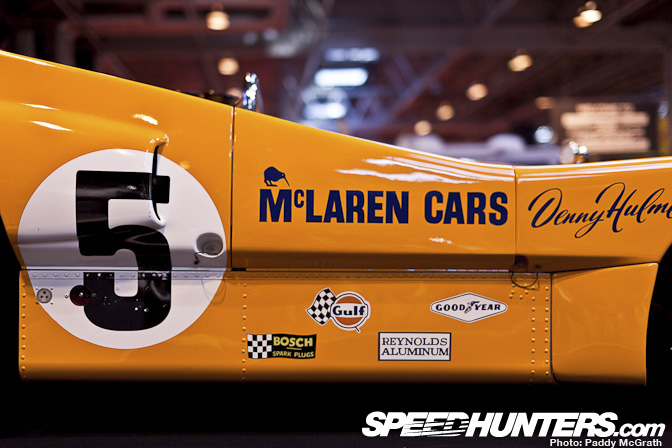
AB: Amidst the tragedy, the McLaren team re-grouped and dominated the Can-Am series as well as taking part in Formula One. Denny Hulme would win the Can-Am chanpionship, scoring twice as many points as his nearerst rival and in the process also secure the constructors title for McLaren.
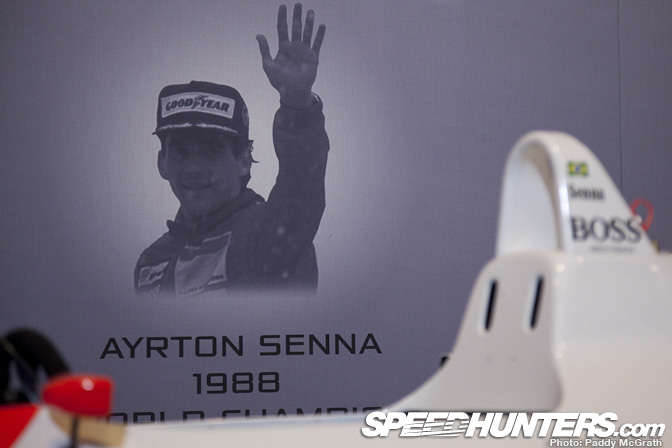
AB: There have been many champions with McLaren, many associate Ayrton Senna with the team from Woking but James Hunt, Alain Prost, Mika Hakkinen and Lewis Hamilton were (and curenntly are) champions of that elite club whilst driving for McLaren. As a team, McLaren also won the constructors trophy eight times. Away from Formula One, McLaren has won the Indianapolis 500 twice, Le Mans once and the Can-Am Championship five times.
PMcG: Sometimes it's best to just sit back and leave the experts do the talking. I just want to add a personal thanks to Andy for taking time to talk us through these incredible cars. I've started work on our next ASI feature which involves something I'm a little bit more familiar with, the Group B era …
-
Andy Blackmore & Paddy McGrath






the f1 driver in history aryton sennna
I've just drooled all over the keyboard....
Le Mans twice if you count Bruce's win with Chris Amon in a Ford GT40(Ford first le man Win)
ah Ayrton, we miss you...
So, who's going to photoshop some Marlboro logo's on so the cars don't look all wrong?
This was very interesting to read! McLaren rules.
I'll be waiting for that Group B post.
Senna... o melhor
amazing article guys! I've learned quite a bit
aswome post! i evny you andy!!!! i would love to work on cars like that for a living!
Top quality feature,
more features with "experts" on Speedhunters please.
i think the reason that first car appeared slightly orange was for the TV, as it showed up a brighter red through the TV. I know thats the reason factory Ducati bikes arent as red in the flesh as they are on TV anyway, just assuming its the same reason awesome cars none the less!
awesome cars none the less!
i stopped giving a $hit about F1 when they introduced the wheelbase-to-track ratio rules that made the cars long and thin... and the tire rules that led to tires with longitudinal grooves on 'em. so distorted.
2jrolla - that was in a Ford, not a McLaren, so it is 1 Le Mans win for McLaren as a company.
same here, i miss the old days.but hey, after thiss, m
Last Pic for Desktop!